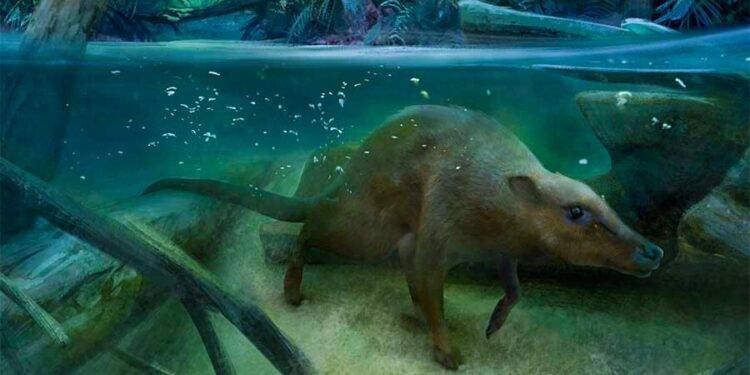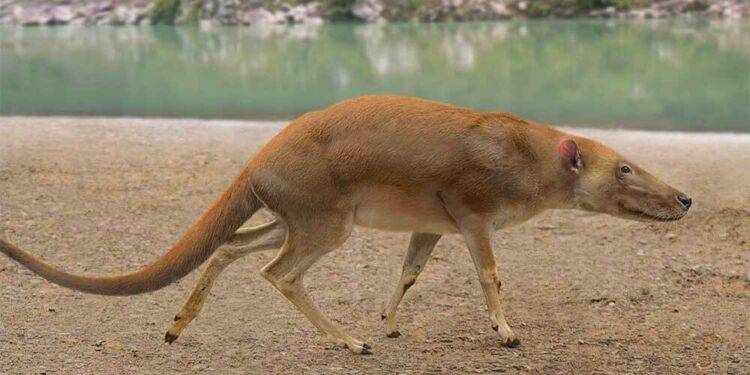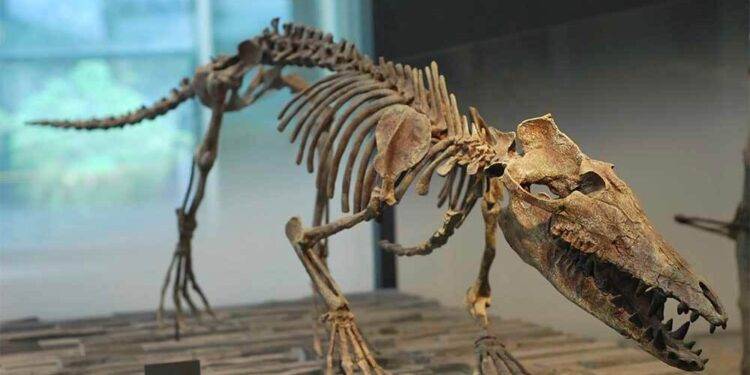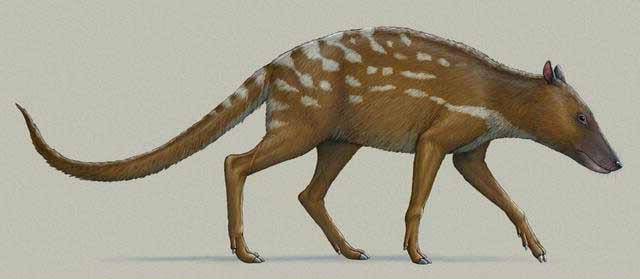Indohyus (meaning ‘’India’s Pig) is a prehistoric mammal that lived about 48 to 52 million years ago. It belongs to the family Raoellidae. Which is an extinct group of herbivorous mammals that lived in the ancient forests of South Asia. The discovery of Indohyus fossils has provided important insights into the evolution of whales and their link to terrestrial ancestors. Let’s explore the characteristics, lifestyle, and significance of Indohyus in the evolutionary history of mammals.

Indohyus Physical Characteristics
Indohyus was a small mammal, about the size of a raccoon. With a length of about 60 centimeters and a weight of around 5 kilograms. It had a stout body, short legs, and a long tail. It’s skull was short and wide, with large eye sockets, and its teeth were adapted for grinding vegetation. The most remarkable feature of Indohyus was its dense bone structure, which is similar to that of whales and dolphins. This adaptation allowed Indohyus to spend more time underwater. By reducing its buoyancy, and it is one of the key traits that link Indohyus to the ancestors of whales.

Habitat and Lifestyle of India’s Pig
Indohyus lived in the forests of South Asia during the early Eocene period. This was a time of warm and humid climate. The environment was dominated by tropical vegetation, including palms, ferns, and other plants. Indohyus was a herbivore and probably fed on leaves, fruits, and other plant material. It had a semi-aquatic lifestyle, spending much of its time in or near water. The Indohyus was an agile swimmer and could move quickly through the water. It used its strong hind legs and tail for propulsion. Indohyus may have also used its dense bone structure to dive deeper and stay underwater for longer periods.

The Earliest Ancestors of Whales
Indohyus is an important link in the evolutionary chain that connects whales to their terrestrial ancestors. The dense bone structure of Indohyus is similar to that of early whales and dolphins. Which suggest that it played a role in the evolution of these aquatic mammals. The presence of this adaptation in Indohyus indicates that it was for developing the bone density required for an aquatic lifestyle. The discovery of Indohyus provides strong evidence for the theory that whales evolved from terrestrial mammals, which adapted to life in water over millions of years.
Indohyus also has important implications for the study of mammalian evolution as a whole. The physical characteristics, such as its short skull and wide eye sockets, suggest that it was a basal member of the Artiodactyla. Artiodactyla is a group of mammals that includes pigs, deer, and cows. The discovery of Indohyus has helped scientists better understand the diversification and evolution of this important mammalian group.

Indohyus is a fascinating prehistoric mammal that provides important insights into the evolutionary history of whales and their link to terrestrial ancestors. Its dense bone structure, semi-aquatic lifestyle, and physical characteristics make it a unique and important part of the fossil record. By studying Indohyus and other early mammals, scientists can better understand the diversity and evolution of mammals over millions of years. Also, as more fossils are discovered and studied, we may learn even more about the fascinating and complex history of life on Earth.
































